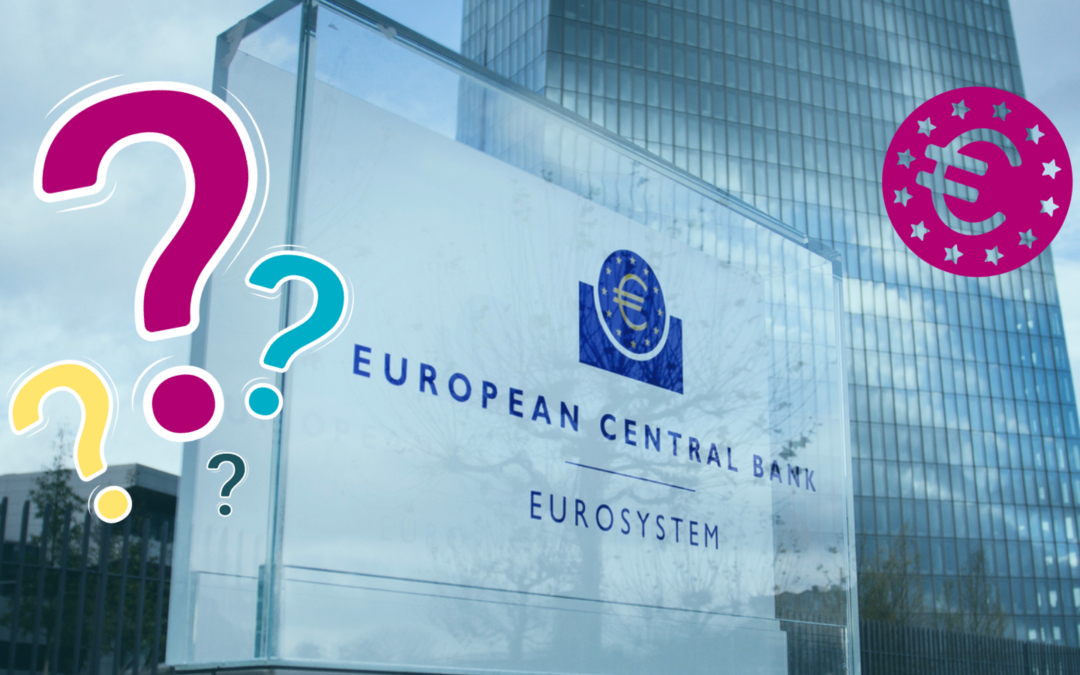After reading this first blog in our explainer series on central banking, you’ll have the basics you need to understand this key institution and join our movement for a fair, democratic and sustainable money system!
Money is central in our daily lives: we use it every day to buy food, shop online, pay our bills and so on. But how is money created in the first place? And who monitors the prices of the goods we buy and the services we use?
Every currency (for example, the euro, the dollar or the Swedish krona) needs a special institution to oversee and manage its money system. These institutions are usually called central banks, but they are not like an ordinary commercial bank where anyone can open a bank account. They have this name because central banks are kind of a ‘bank of the banks’.
What are the central banks of the Eurozone?
Every country that has its own currency has a central bank. The Eurozone is, however, a special case, as there are no less than 20 national central banks! This is because, before the creation of the euro, most countries had their own national currency and, therefore, their own central bank (for example, Banque de France and Banco de España). When EU countries created the euro, they chose to preserve the national central banks, while at the same time creating the European Central Bank (ECB) above them. Both national central banks and the ECB work together and form a closely integrated network: the Eurosystem.
What is the ECB’s primary mandate?
The ECB’s main mission is to maintain trust in the euro as a currency, by controlling the amount of money that circulates in the economy to keep the average prices of goods and services stable. In other words, its primary mandate is to ensure price stability.
Why is price stability so important? Primarily because stable prices allow us to plan our future with confidence and make well-informed decisions — knowing that prices will not fluctuate excessively, businesses and individuals will be more likely to make investments or purchases.
If all prices in the Eurozone were to increase — a process called inflation — and this happened too much and too quickly, people may consider using a different currency to the euro, such as foreign currencies or even alternative means of payment like cryptocurrencies. Ultimately, the stability of the system depends on the trust we have in the currency, which excessive inflation can undermine.
The opposite phenomenon, when prices go down, is called deflation. When this happens, wages may also go down because companies expect a reduction in income from sales. Moreover, deflation increases the real value of debt — this means that although prices and incomes fall, debt does not. In times of deflation, businesses have a falling revenue and households a declining income, which makes debt repayments become more of a burden. The same goes for governments, who have less money to spend and invest.
This is why the ECB needs to fight both excessive inflation and deflation. In practice, the central bank has defined a stable price system as one with an inflation rate of 2%. So how does the ECB ensure that this is achieved? They mainly use the tool of interest rates — about which we will tell you more in our next blogs.
What is the ECB’s secondary mandate?
Besides working to keep prices stable, the ECB also has a more general secondary mandate of supporting the economic policies of the European Union. These include full employment, improvements to the quality of the environment, economic and social cohesion, and social justice and protection. However, the EU treaties clearly state that the ECB must prioritise the price stability objective over any other.
The ECB also carries out a number of other tasks, such as the supervision of the biggest European banks, collecting statistics and overseeing payment systems.
Who controls the ECB?
The ECB and the national central banks are independent institutions. That is, they cannot take instructions from governments and other EU institutions, nor finance them directly. The idea is that by isolating central banks from political cycles, politicians are prevented from pressuring the central banks to help governments for their own electoral interests.
Central bank independence became widespread in the 1990s, following the experiences in some countries like Germany, where independent central banks were more successful in keeping inflation low. The independence of the ECB was enshrined in the Treaty on the European Union in 1992 and can only be changed by the unanimity of all EU Member States.
As a counterpart to this high degree of independence, the ECB is accountable to the European Parliament and to the European Council — this means that the central bank has to justify and explain its decisions to the European Parliament, for example, during the so-called ‘Monetary Dialogue’ hearings, which are held every three months. The Court of Justice can also intervene (and has done so) in cases where the ECB goes beyond its mandate.
This is the first blog in a series that will help you better navigate the world of the money system and central banking. In the next articles, we will cover topics such as the interest rate mechanism, what the ECB can do for the green transition, central bank accountability and much more. Stay tuned!

